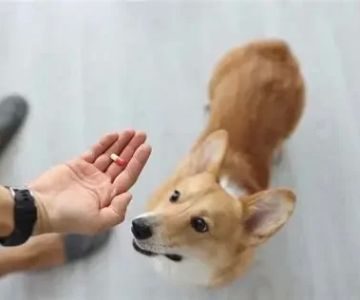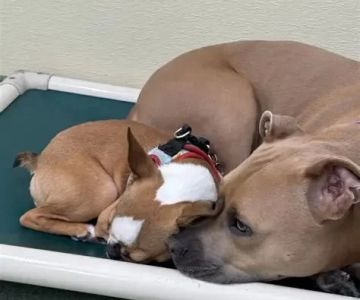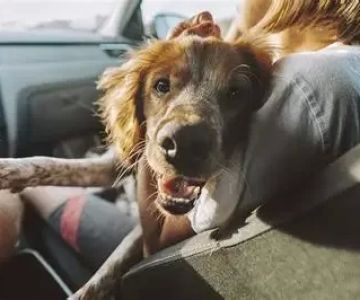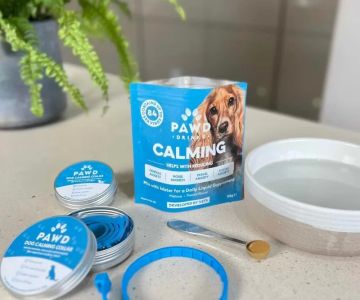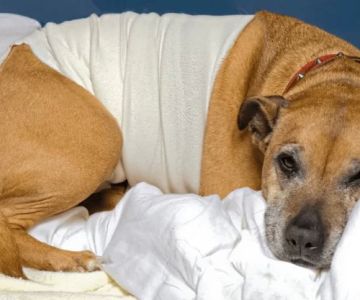How to Help Your Dog Lose Weight: A Comprehensive Guide
As a dog owner, one of the most important things I’ve learned is how crucial it is to keep my furry friend at a healthy weight. Over the years, I’ve seen my dog struggle with weight gain, and the challenges that come with it. That’s why I decided to take matters into my own hands and figure out how to help my dog lose weight in a safe and healthy manner. In this article, I’m going to share everything I’ve learned about managing my dog’s weight, and I’ll offer helpful tips that you can use to help your dog shed those extra pounds too.
Understanding Dog Obesity
First, it’s important to understand what obesity is and how it affects our dogs. Just like humans, dogs can become overweight, and this condition can lead to a number of health problems, including heart disease, diabetes, joint problems, and a reduced lifespan. My dog, Max, was diagnosed as overweight by our vet during a routine checkup. It was a wake-up call for me, and I knew I had to do something about it.
Obesity in dogs is often caused by a combination of factors including poor diet, lack of exercise, and even genetics. Some breeds are more predisposed to weight gain than others, but with the right care, we can help our dogs live healthier lives.
How to Determine if Your Dog is Overweight
The first step in helping your dog lose weight is to determine if they are, in fact, overweight. This can be tricky since different dog breeds come in different shapes and sizes. But there are a few key signs to look out for:
- If you can’t easily feel your dog’s ribs, it could be a sign of excess weight.
- If your dog has a noticeable belly or love handles, it might be time to assess their diet and activity levels.
- Check your dog’s waistline. When you look at your dog from above, there should be a visible indentation behind their ribs. If this is absent, your dog could be carrying extra weight.
If you’re unsure, it’s always a good idea to consult with a veterinarian who can assess your dog’s body condition and provide professional advice on how to proceed.
Creating a Weight Loss Plan for Your Dog
Once you’ve determined that your dog is overweight, it’s time to take action. Just like with humans, losing weight takes time, patience, and commitment. Here are the steps I took to help Max get back to a healthy weight:
1. Visit the Veterinarian
The first thing I did was take Max to the vet. Your vet can provide you with a tailored weight loss plan that is safe and effective for your dog’s breed, age, and health condition. They will also be able to rule out any underlying health issues that might be contributing to your dog’s weight gain.
2. Adjust Their Diet
Diet plays a huge role in weight loss, and it was the first thing I focused on for Max. I started by reducing the amount of food Max was eating each day. However, I didn’t just cut his food quantity without a plan. Instead, I switched to a high-quality, low-calorie dog food that was designed for weight loss. This helped Max feel full without consuming too many calories.
Some tips I learned include:
- Measure your dog’s food. It’s easy to overfeed your dog, especially if you free-feed (leaving food out all day). Use a measuring cup to control portions.
- Feed smaller meals more frequently. Instead of feeding Max once or twice a day, I started giving him three small meals throughout the day to keep his metabolism active.
- Limit treats. I love giving Max treats, but I had to cut back significantly. Instead of high-calorie snacks, I used healthy alternatives like baby carrots or small pieces of apple.
3. Exercise Regularly
Exercise was another key factor in Max’s weight loss journey. I started by gradually increasing his daily walks. At first, he could only walk for about 15 minutes, but over time, we worked up to 45-minute walks twice a day. Walking is an excellent low-impact exercise for dogs, especially if they have joint issues.
Here are some exercise ideas that worked for Max:
- Leash walks. A simple, brisk walk is a great way to get your dog moving. Max loved these, and it also helped reduce his anxiety.
- Interactive play. I also incorporated playtime into Max’s routine. Playing fetch or tug-of-war is a great way to engage your dog and burn off extra calories.
- Swimming. If you have access to a safe body of water, swimming is an excellent, low-impact exercise for dogs with joint problems.
4. Monitor Progress
Throughout Max’s weight loss journey, I made sure to monitor his progress closely. I weighed him every couple of weeks and kept track of any changes in his behavior or energy levels. This helped me stay motivated and adjust his plan as needed. Remember, weight loss can be slow, so it’s important to celebrate small victories along the way!
5. Be Consistent and Patient
One of the most important things I learned is that weight loss doesn’t happen overnight. It took several months for Max to reach his ideal weight, but the progress was definitely worth it. Consistency in diet, exercise, and monitoring his health is key to long-term success. And, of course, Max’s health and happiness were my ultimate goal, which kept me motivated throughout the process.
Why Weight Loss Matters for Your Dog’s Health
Helping your dog lose weight isn’t just about improving their appearance; it’s about improving their overall quality of life. Dogs that maintain a healthy weight have more energy, experience fewer health problems, and live longer lives. It’s a gift that I’m so grateful I gave to Max, and I encourage every dog owner to consider how their pet’s weight may be affecting their health.
When I saw the transformation in Max—he became more active, playful, and even less anxious—I knew that the effort was worth it. Weight loss is a journey, but it’s one that can drastically improve your dog’s health and happiness. If you’re unsure where to start, don’t hesitate to reach out to a veterinarian or pet health professional for guidance. You and your dog deserve a long, healthy life together.




